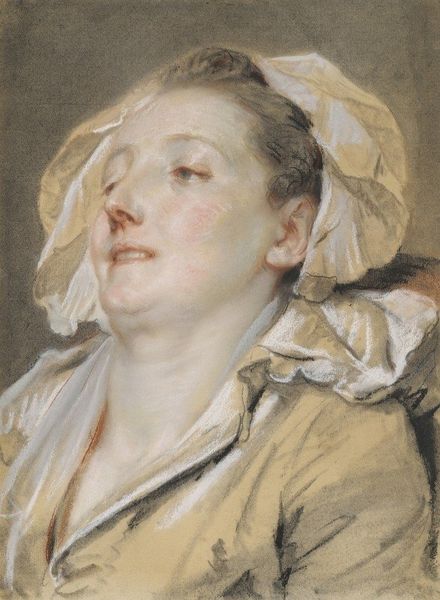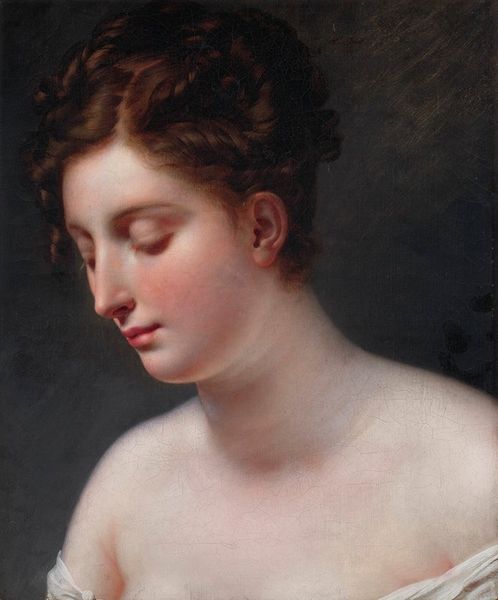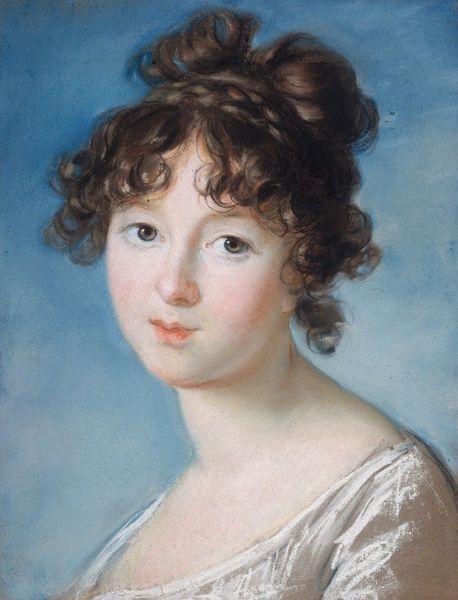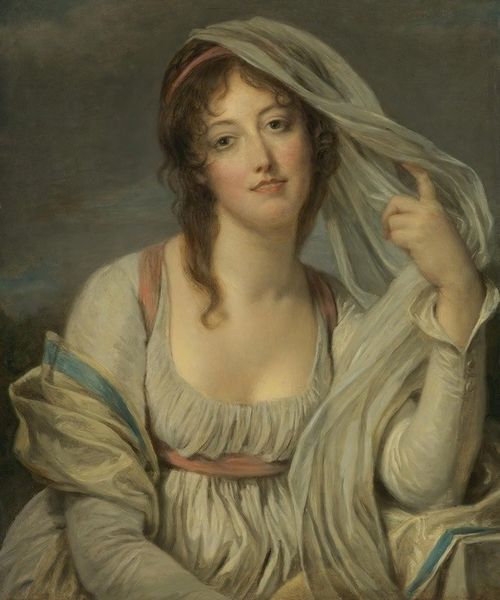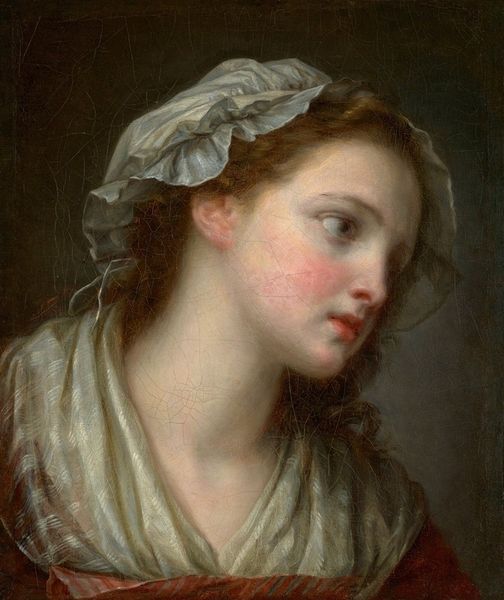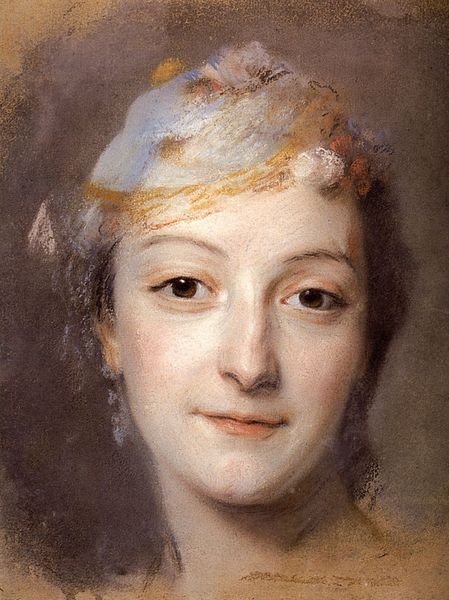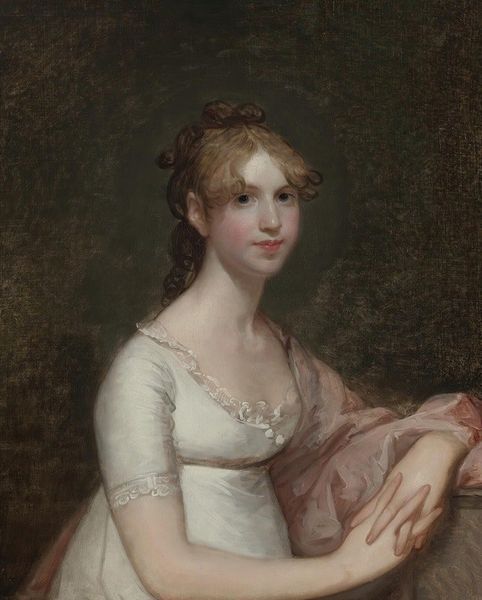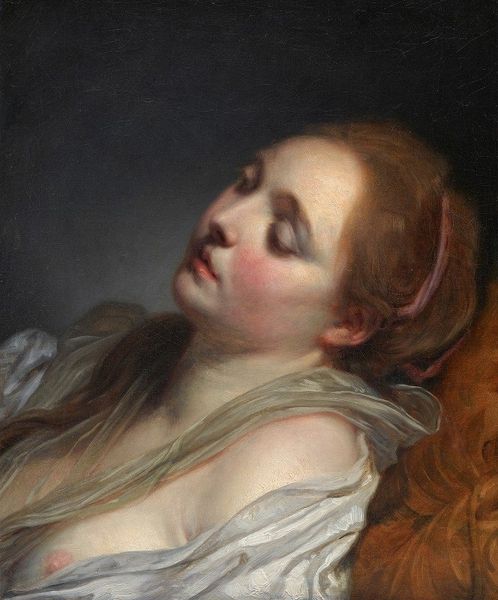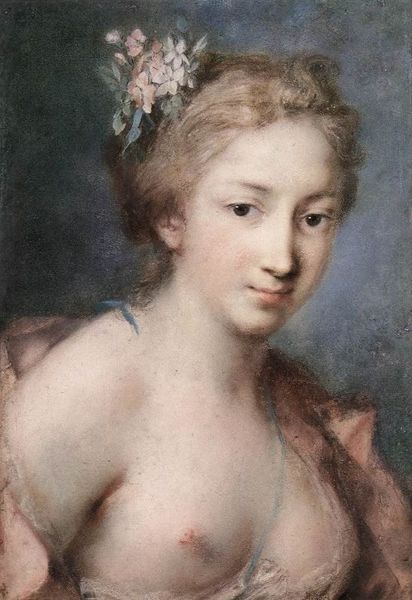
drawing, pastel
#
portrait
#
drawing
#
self-portrait
#
pastel
#
rococo
Copyright: Public Domain: Artvee
Curator: Let’s turn our attention now to "The Head of a Young Woman Wearing a Bonnet and Facing Left" a pastel drawing attributed to Jean-Baptiste Greuze. It exemplifies the Rococo style that captivated the 18th century. Editor: It’s beautiful. The colors are so soft, and the woman’s gaze is quite intense, giving a sense of gentle longing. There is also an intriguing intimacy about it. Curator: Yes, the choice of pastel is crucial. Its delicate texture mimics the softness of skin, imbuing the image with a tactile quality. Think about where Greuze, as a skilled artisan, would source these materials— the grinding of pigments, the making of the paper. The making informs our viewing. Editor: Absolutely. This woman's identity matters too. Who was she? The way she’s portrayed – the soft lighting, the dreamy expression – it all speaks to the representation of women in art during that time. How much control did she have over her own image and how would it have been interpreted? Curator: And we can ask, how does the seemingly informal bonnet function in this portrait? It seems deliberately constructed to frame the face, directing the viewer's gaze and controlling their perspective. Is this presentation of modesty concealing other truths about her role? Editor: Precisely. It's an intersection of class, gender and social expectation manifested in a deceptively simple drawing. It prompts you to consider power structures within both the domestic space and art production more broadly. Curator: Agreed. By considering materials, production, and social context we see "Head of a Young Woman..." is much more than just a pretty picture. Editor: Ultimately, by looking deeper, we are confronted with uncomfortable yet important questions about identity, representation and how artistic choices echo within larger cultural dialogues, challenging us even today.
Comments
No comments
Be the first to comment and join the conversation on the ultimate creative platform.

